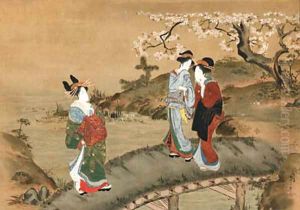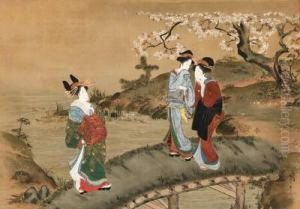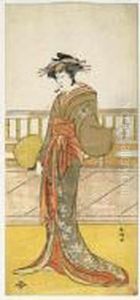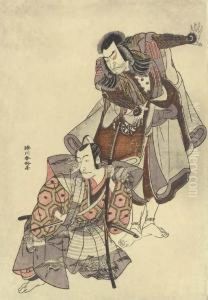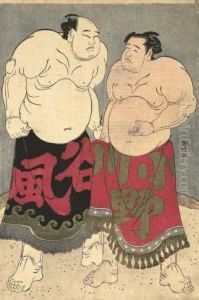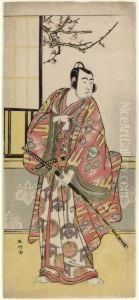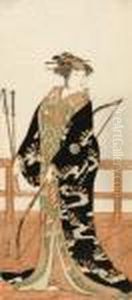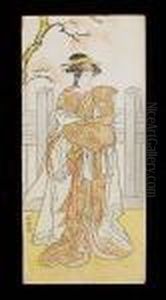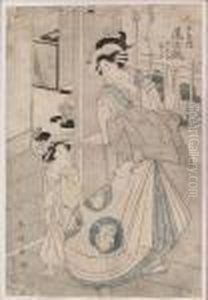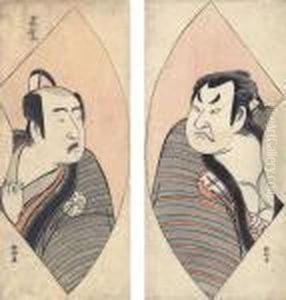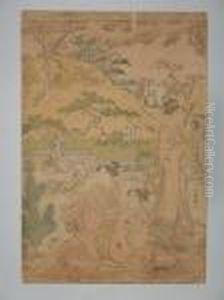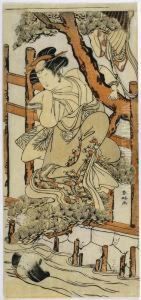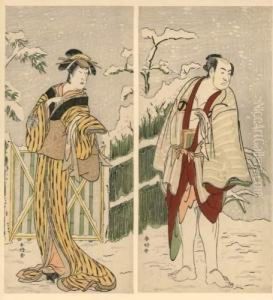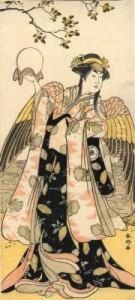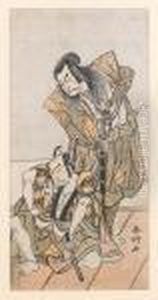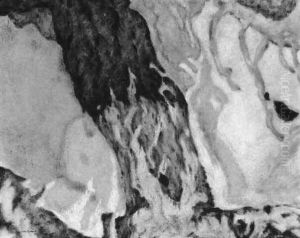Katsukawa Shunko Paintings
Katsukawa Shunko was a prominent Japanese artist known for his ukiyo-e style woodblock prints, particularly focusing on the kabuki theatre of Edo period Japan. Born in 1743, Shunko was a pivotal figure in the Katsukawa school, which played a significant role in the development of ukiyo-e, a genre of Japanese art that flourished between the 17th and 19th centuries. Shunko's works are characterized by their vivid portrayal of kabuki actors, capturing the dynamism and emotion of their performances with striking clarity and detail.
Shunko began his artistic career under the tutelage of Katsukawa Shunsho, the founder of the Katsukawa school, where he honed his skills in depicting the theatrical world. His early works closely followed the style of his mentor, focusing on the actor portraits known as yakusha-e. However, as his career progressed, Shunko developed his own distinctive style, introducing more dynamic compositions and a greater emphasis on the facial expressions and gestures of his subjects, thus adding a new level of depth and realism to the genre.
The late 18th century was a period of great innovation and competition among ukiyo-e artists, and Shunko's contributions to the field were significant. He was among the first to produce multi-panel prints, which allowed for more complex and detailed compositions, expanding the narrative possibilities of the medium. His work not only captured the essence of kabuki theatre but also reflected the broader cultural and social dynamics of Edo Japan, offering insights into the popular culture of the time.
Unfortunately, around 1790, Shunko suffered a stroke that left his right arm paralyzed, severely limiting his ability to create new works. Despite this setback, he continued to produce art until his death in 1812, though his output was understandably reduced and his later works were primarily confined to sketches and smaller projects. Today, Katsukawa Shunko is remembered as a master of ukiyo-e, whose innovative techniques and expressive portrayals of kabuki actors have left a lasting legacy in the world of Japanese art.
